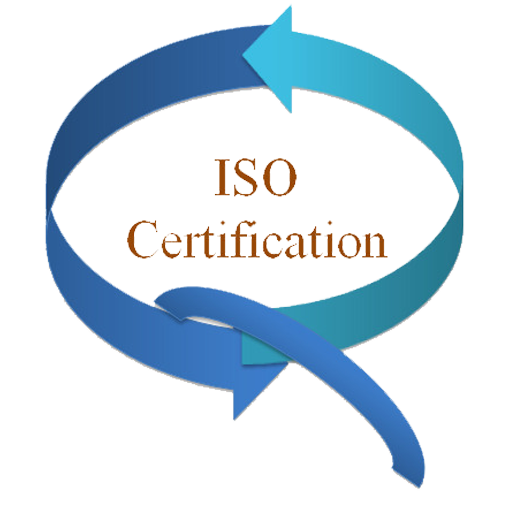Clavuxan Injection - Patient Information Leaflet
Clavuxan Injection IP 100mg,
Clavuxan Injection IP 200mg,
Clavuxan Injection IP 500mg,
Clavuxan Injection IP 1000mg
1. What clavuxan injection is and what it is used for
Clavuxan is an antibiotic and works by killing bacteria that cause infections. It contains two different medicines called amoxicillin and clavulanic acid. Amoxicillin belongs to a group of medicines called “penicillins” that can sometimes be stopped from working (made inactive). The other active component (clavulanic acid) stops this from happening.
Clavuxan is used in adults and children to treat the following infections:
• severe ear, nose and throat infections
• respiratory tract infections
• urinary tract infections
• skin and soft tissue infections including dental infections
• bone and joint infections
• intra-abdominal infections
• genital organ infections in women.
Clavuxan is used in adults and children to prevent infections associated with major surgical procedures.
2. What you need to know before you take clavuxan injection
You should not have Clavuxan:
• if you are allergic to amoxicillin, clavulanic acid, penicillin or any of the other ingredients of this medicine (listed in section 6).
• if you have ever had a severe allergic reaction to any other antibiotic. This can include a skin rash or swelling of the face or neck.
• if you have ever had liver problems or jaundice (yellowing of the skin) when taking an antibiotic.
Do not take Clavuxan if any of the above apply to you.
If you are not sure, talk to your doctor, pharmacist or nurse before having Clavuxan.
Warnings and Precautions
Talk to your doctor, pharmacist or nurse before having this medicine if you:
• have glandular fever
• are being treated for liver or kidney problems
• are not passing water regularly.
If you are not sure if any of the above apply to you, talk to your doctor, pharmacist or nurse before taking Clavuxan.
In some cases, your doctor may investigate the type of bacteria that is causing your infection. Depending on the results, you may be given a different strength of Clavuxan or a different medicine.
Conditions you need to look out for
Clavuxan can make some existing conditions worse, or cause serious side effects. These include allergic reactions, convulsions (fits) and inflammation of the large intestine. You must look out for certain symptoms while you are taking Clavuxan, to reduce the risk of any problems. See ‘Conditions you need to look out for’ in Section 4.
Blood and urine tests
If you are having blood tests (such as red blood cell status tests or liver function tests) or urine tests (for glucose), let the doctor or nurse know that you are taking Clavuxan. This is because Clavuxan can affect the results of these types of tests
Other medicines and Clavuxan
Tell your doctor, pharmacist or nurse if you are using, have recently used or might use any other medicines. This includes medicines that can be bought without a prescription and herbal medicines. If you are taking allopurinol (used for gout) with Clavuxan, it may be more likely that you will have an allergic skin reaction. If you are taking probenecid (used for gout), your doctor may decide to adjust your dose of Clavuxan. If medicines to help stop blood clots (such as warfarin) are taken with Co-amoxcilav then extra blood tests may be needed. Clavuxan can affect how methotrexate (a medicine used to treat cancer or rheumatic diseases) works. Clavuxan can affect how mycophenolate mofetil (a medicine used to prevent the rejection of transplanted organs) works. If you are a transplant patient taking mycophenolate mofetil talk to your doctor.
Pregnancy, breast-feeding and fertility
If you are pregnant or breast-feeding, think you may be pregnant or are planning to have a baby, ask your doctor, pharmacist or nurse for advice before taking this medicine.
Driving and using machines
Clavuxan can have side effects and the symptoms may make you unfit to drive. Do not drive or operate machinery unless you are feeling well.
Clavuxan contains sodium and potassium:
500 mg/100 mg powder for injection or infusion
• Clavuxan 500 mg/100 mg contains approximately 31.4 mg (1.4 mmol) of sodium. This should be considered if you are on a controlled sodium diet.
• Clavuxan 500 mg/100 mg contains approximately 19.6 mg (0.5 mmol) of potassium. This should be considered by patients with kidney problems or patients on a controlled potassium diet. 1000 mg/200 mg powder for injection or infusion
• Clavuxan 1000 mg/200 mg contains approximately 62.9 mg (2.7 mmol) of sodium. This should be considered if you are on a controlled sodium diet.
• Clavuxan 1000 mg/200 mg contains approximately 39.3 mg (1.0 mmol) of potassium. This should be considered by patients with kidney problems or patients on a controlled potassium diet.
3. How to take clavuxan injection
You will never give yourself this medicine. A qualified person, like a doctor or a nurse, will give you this medicine.
The recommended doses are:
500 mg/100 mg, 1000 mg/200 mg powder for injection or infusion
Adults, and children weighing 40 kg and over
| Table 1 | |
|---|---|
| Standard dose | 1000 mg/200 mg every 8 hours. |
| To stop infections during and after surgery | 1000 mg/200 mg before the surgery when you are given your anaesthetic. The dose can differ depending on the type of operation you are having. Your doctor may repeat the dose if your surgery takes longer than 1 hour. |
Children weighing less than 40 kg
• All doses are worked out depending on the child’s bodyweight in kilograms
| Table 2 | |
|---|---|
| Children aged 3 months and over: | 25 mg/5 mg for each kilogram of bodyweight every 8 hours. |
| Children aged less than 3 months or weighing less than 4 kg | 25 mg/5 mg for each kilogram of body weight every 12 hours. |
Patients with kidney and liver problems
• If you have kidney problems you may be given a different dose. A different strength or a different medicine may be chosen by your doctor.
4. Possible side effects
Like all medicines, this medicine can cause side effects, although not everybody gets them. The side effects below may happen with this medicine.
Conditions you need to look out for Allergic reactions:
• skin rash
• inflammation of blood vessels (vasculitis) which may be visible as red or purple raised spots on the skin, but can affect other parts of the body
• fever, joint pain, swollen glands in the neck, armpit or groin
• swelling, sometimes of the face or mouth (angioedema), causing difficulty in breathing
• collapse.
Contact a doctor immediately
if you get any of these symptoms.
Stop taking Clavuxan Inflammation of large intestine
Inflammation of the large intestine, causing watery diarrhoea usually with blood and mucus, stomach pain and/or fever.
Contact your doctor as soon as possible for advice if you get these symptoms.
Common side effects
These may affect up to 1 in 10 people
• thrush (candida - a yeast infection of the vagina, mouth or skin folds)
• diarrhea
Uncommon side effects
These may affect up to 1 in 100 people
• skin rash, itching
• raised itchy rash (hives)
• feeling sick (nausea), especially when taking high doses
• vomiting
• indigestion
• dizziness
• headache
Uncommon side effects that may show up in your blood tests:
• increase in some substances (enzymes) produced by the liver
Rare side effects
These may affect up to 1 in 1000 people
• skin rash, which may blister, and looks like small targets (central dark spots surrounded by a paler area, with a dark ring around the edge – erythema multiforme) if you notice any of these symptoms contact a doctor urgently.
• swelling and redness along a vein which is extremely tender when touched.
Rare side effects that may show up in your blood tests:
• low number of cells involved in blood clotting
• low number of white blood cells.
Frequency not known
Frequency cannot be estimated from the available data.
• Allergic reactions (see above)
• Inflammation of the large intestine (see above)
• Inflammation of the membranes surrounding the brain (aseptic meningitis)
• Serious skin reactions:
- a widespread rash with blisters and peeling skin, particularly around the mouth, nose, eyes and genitals (Stevens-Johnson syndrome), and a more severe form, causing extensive peeling of the skin (more than 30% of the body surface – toxic epidermal necrolysis)
- widespread red skin rash with small pus-containing blisters (bullous exfoliative dermatitis) - a red, scaly rash with bumps under the skin and blisters (exanthemous pustulosis)
- flu-like symptoms with a rash, fever, swollen glands, and abnormal blood test results (including increased white blood cells (eosinophilia) and liver enzymes) (Drug Reaction with Eosinophilia and Systemic Symptoms (DRESS)
Contact a doctor immediately if you get any of these symptoms
• inflammation of the liver (hepatitis)
• jaundice, caused by increases in the blood of bilirubin (a substance produced in the liver) which may make your skin and whites of the eyes appear yellow
• blood takes longer to clot
• convulsions (in people taking high doses of Clavuxan or who have kidney problems).
Side effects that may show up in your blood or urine tests:
• severe reduction in the number of white blood cells
• low number of red blood cells (haemolytic anaemia)
• crystals in urine.
Reporting of side effects
If you get any side effects, talk to your doctor, pharmacist or nurse. This includes any possible side effects not listed in this leaflet. You can also report side effects directly via the national reporting systems listed below:
United Kingdom: Yellow Card Scheme Website: http://www.mhra.gov.uk/yellowcard or search for MHRA Yellow Card in the Google Play or Apple App Store.
reland: HPRA Pharmacovigilance, Earlsfort Terrace, IRL - Dublin 2; Tel: +353 1 6764971; Fax: +353 1 6762517; Website: www.hpra.ie; e-mail: medsafety@hpra.ie. By reporting side effects you can help provide more information on the safety of this medicine
5. How to store clavuxan injection
Keep this medicine out of the sight and reach of children.
Do not use this medicine after the expiry date which is stated on the carton. The expiry date refers to the last day of that month.
Do not throw away any medicines via wastewater or household waste. Ask your pharmacist how to throw away medicines you no longer use. These measures will help protect the environment.
6. Contents of the pack and further information
What Clavuxan contains
The active substances are amoxicillin (a penicillin) and clavulanic acid. There are no other ingredients
What Clavuxan looks like and contents of the pack
Clavuxan injection is available in two strengths, 500/100mg and 1000/200mg, and is available in packs of 10 glass vials.
Clavuxan 500/100mg vials each contain 500mg of amoxicillin (as sodium salt) with 100mg of clavulanic acid (as potassium salt). Clavuxan 1000/200mg vials each contain 1000mg of amoxicillin (as sodium salt) with 200mg of clavulanic acid (as potassium salt).
Manufactured by:
Taj Pharmaceuticals Limited
220, Mahagujarat Ind. Estate, Moraiya, Tal.
Sanand, Dist. Ahmedabad, Gujarat, INDIA
Marketing Authorization Holder:
Regal sun co., Ltd.Myanmar
Click here for Download pdf of patient informationClick here for Download pdf of prescribing information








